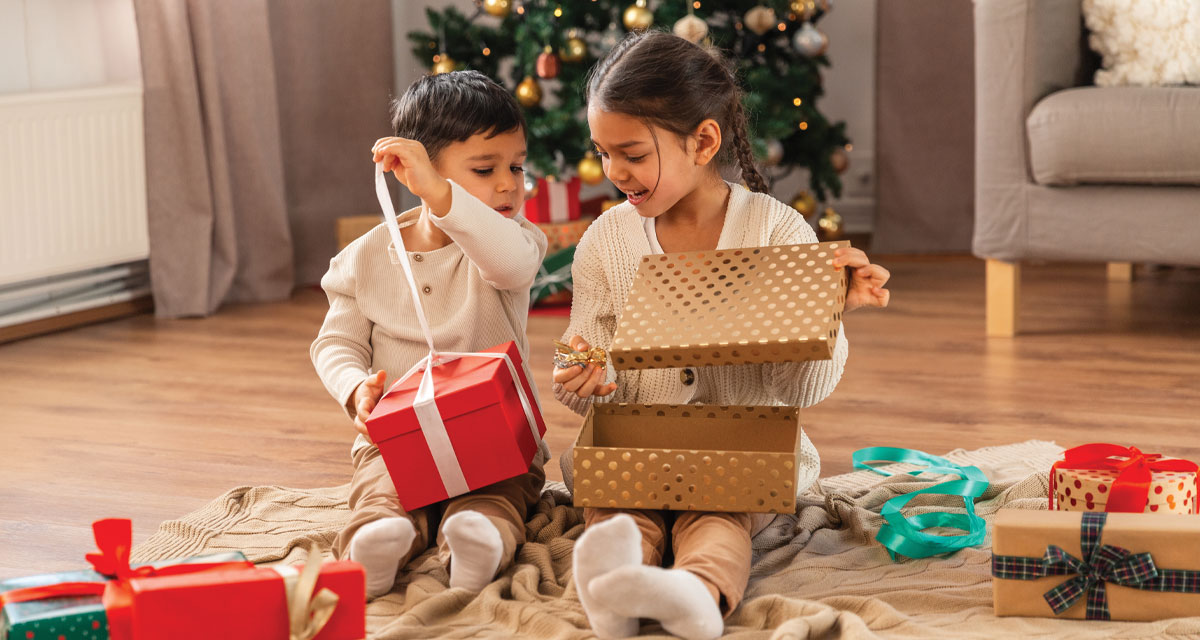Each month, this series will provide important facts and tips surrounding child safety in an effort to support parents and caregivers as they navigate reducing risks and creating the safest environment possible for the children in their lives.
The holidays are here and with them comes the joy of seeing the youngest members of our friends and family light up as they open presents! In honor of National Safe Toys & Celebrations Month, we’re sharing everything you need to know to keep the children in your life happy and safe.
The U.S. Consumer Product Safety Commission (CPSC) has established testing requirements around the world that help enforce limits on lead and phthalates in toys, as well as stopping dangerous toy parts from ever reaching the marketplace. While these efforts should absolutely help American families feel confident about the toys they purchase, it’s crucial that they have their own independent steps to follow to ensure additional safety precautions to avoid injuries.
Understanding the Risks of Specific Toys and Gifts
It’s crucial to be mindful of age-appropriate safety risks when choosing toys and children’s gifts. For children younger than age three, avoid toys with small parts that could become choking hazards. When considering scooters and other riding toys, safety is paramount. These toys can go fast, and falls could be potentially deadly if proper safety gear isn’t worn. When gifting ride-on toys, helmets that are sized to fit as well as knee and elbow pads are recommended for young children. Toys that contain magnets can pose significant risks (especially if swallowed) and are often included in building and play sets, so be sure all pieces are safe for the age of the gift recipient. Arts and craft-related gifts need to be “non-toxic” for children and are best given with the understanding that adult supervision may be required. Be aware to keep toys meant for older children away from their younger siblings, as well!
Remember that you know your child best. Despite what appropriate age is listed, always trust your gut on what toys your specific child is ready to play with safely, and wait longer if needed.
Encouraging Appropriate Gift Choices with Friends & Family
Gift giving is such a special way to show love and appreciation, and often friends and family pick things out they think our little ones will enjoy. It can seem uncouth to suggest specific items for gifts or make an assumption that someone is gifting something at all. If your child has sensory issues, special needs or if there are any specific items you don’t want your child to play with such as screen devices, toy weapons, loud noise makers, etc., it’s okay to kindly let someone know if they ask for gift ideas. As a parent or guardian of a child, consider sharing a link to an Amazon wish list with gift items you know your child would love and would be safe.
Ensuring Safe Gift Opening Experiences
Something easily overlooked is the risk of gift wrapping materials. Gift bags, bows and other decorative packaging can be cause for concern when left accessible to infants and children. Be sure to immediately discard all packaging materials such as bubble wrap, plastic bags or ribbons. Store away any materials you wish to save such as gift bags or bows right away, so they aren’t mistaken for fun play items. If a gift comes with batteries, make sure your child can’t get to them, especially “button” lithium ion batteries which can cause life-threatening injuries if swallowed. Store away adapters and chargers as well to reduce any risk of thermal burns.
Taking Action When an Incident Occurs
Always check to make sure toys have not been recalled and there are no active safety alerts for specific toys or brands when shopping. If your child receives a gift that isn’t age appropriate, consider exchanging it for something else or putting it away for later when they reach the right age.
If a gift is well loved but begins to pose a risk due to your child’s use of the item or another threat to safety, always remove the toy immediately. If an incident or injury occurs, call your pediatrician or visit your local emergency room depending on the severity of the incident. Always contact and notify the toy’s brand manufacturer if there is a safety issue caused by the toy or item, so they can keep track of and use these findings in the event a recall is necessary to help other families stay safe.
Helpful Resources to Learn More
Consumer Product Safety Commission https://www.cpsc.gov/Regulations-Laws–Standards/Voluntary-Standards/Topics/Toys}



















